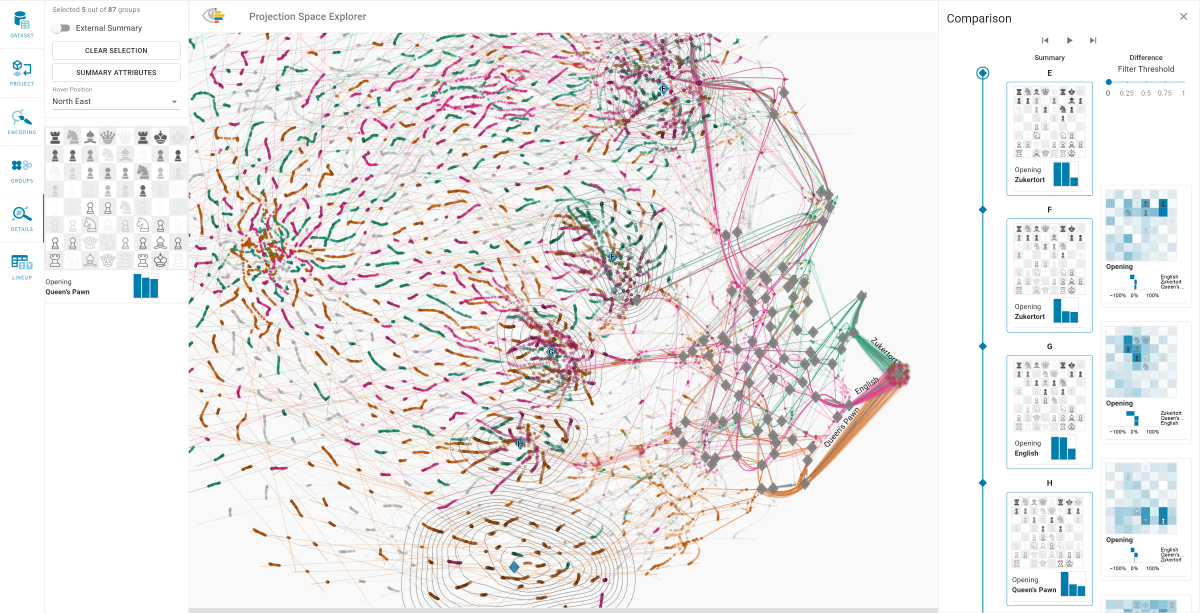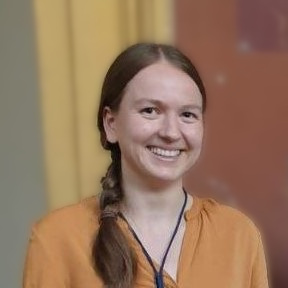
Abstract
In this work, we propose an interactive visual approach for the exploration and formation of structural relationships in embeddings of high-dimensional data. These structural relationships, such as item sequences, associations of items with groups, and hierarchies between groups of items, are defining properties of many real-world datasets. Nevertheless, most existing methods for the visual exploration of embeddings treat these structures as second-class citizens or do not take them into account at all. In our proposed analysis workflow, users explore enriched scatterplots of the embedding, in which relationships between items and/or groups are visually highlighted. The original high-dimensional data for single items, groups of items, or differences between connected items and groups is accessible through additional summary visualizations. We carefully tailored these summary and difference visualizations to the various data types and semantic contexts. During their exploratory analysis, users can externalize their insights by setting up additional groups and relationships between items and/or groups. We demonstrate the utility and potential impact of our approach by means of two use cases and multiple examples from various domains.
Citation
Klaus
Eckelt,
Andreas
Hinterreiter,
Patrick
Adelberger,
Conny
Walchshofer,
Vaishali
Dhanoa,
Christina
Humer,
Moritz Heckmann,
Christian A.
Steinparz,
Marc
Streit
Visual Exploration of Relationships and Structure in Low-Dimensional Embeddings
IEEE Transactions on Visualization and Computer Graphics,
29(7):
3312-3326, doi:10.1109/TVCG.2022.3156760, 2023.
BibTeX
@article{2022_embedding_structure,
title = {Visual Exploration of Relationships and Structure in Low-Dimensional Embeddings},
author = {Klaus Eckelt and Andreas Hinterreiter and Patrick Adelberger and Conny Walchshofer and Vaishali Dhanoa and Christina Humer and Moritz Heckmann and Christian A. Steinparz and Marc Streit},
journal = {IEEE Transactions on Visualization and Computer Graphics},
doi = {10.1109/TVCG.2022.3156760},
url = {https://ieeexplore.ieee.org/document/9729550},
volume = {29},
number = {7},
pages = {3312-3326},
month = {July},
year = {2023}
}
Acknowledgements
This work was supported in part by the Boehringer Ingelheim Regional Center Vienna, the State of Upper Austria and the Austrian Federal Ministry of Education, Science and Research via the LIT – Linz Institute of Technology (LIT-2019-7-SEE-117), the State of Upper Austria (Human-Interpretable Machine Learning), and the Austrian Science Fund (FWF DFH 23-N). This work was supported in part by the FFG, Contract No. 881844: “Pro2Future is funded within the Austrian COMET Program Competence Centers for Excellent Technologies under the auspices of the Austrian Federal Ministry for Climate Action, Environment, Energy, Mobility, Innovation and Technology, the Austrian Federal Ministry for Digital and Economic Affairs and of the Provinces of Upper Austria and Styria. COMET is managed by the Austrian Research Promotion Agency FFG.”.
Projection Space Explorer
Usage and all applications of the Projection Space Explorer can be found on the dedicated Landing Page.








